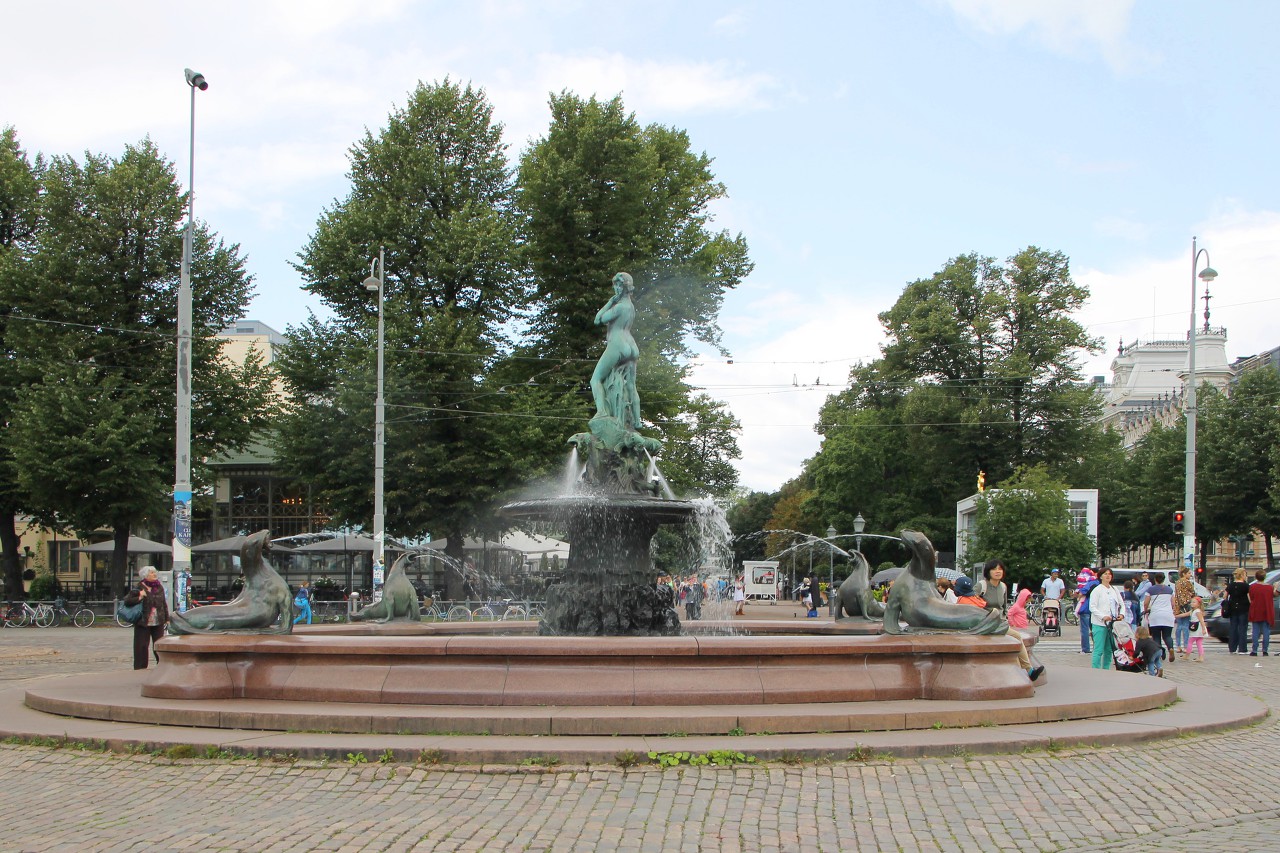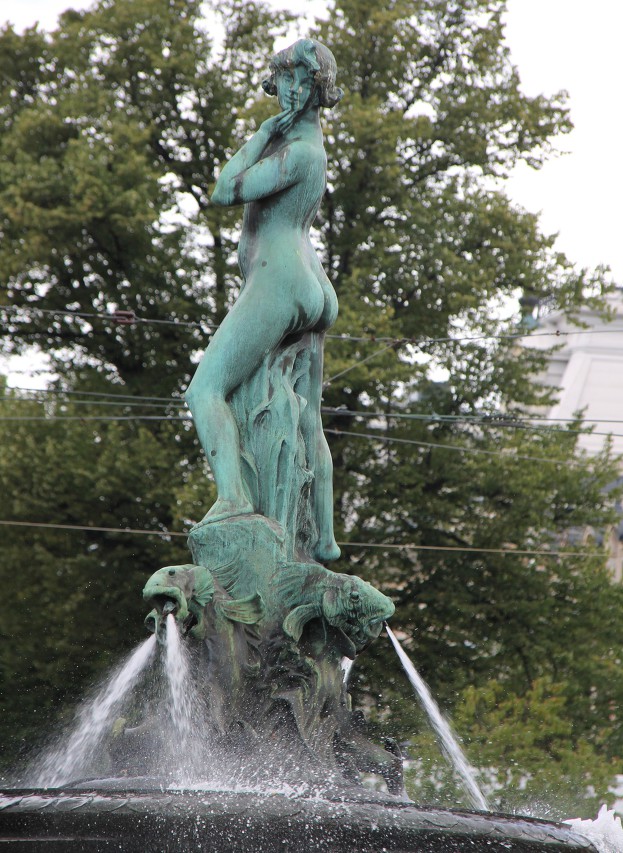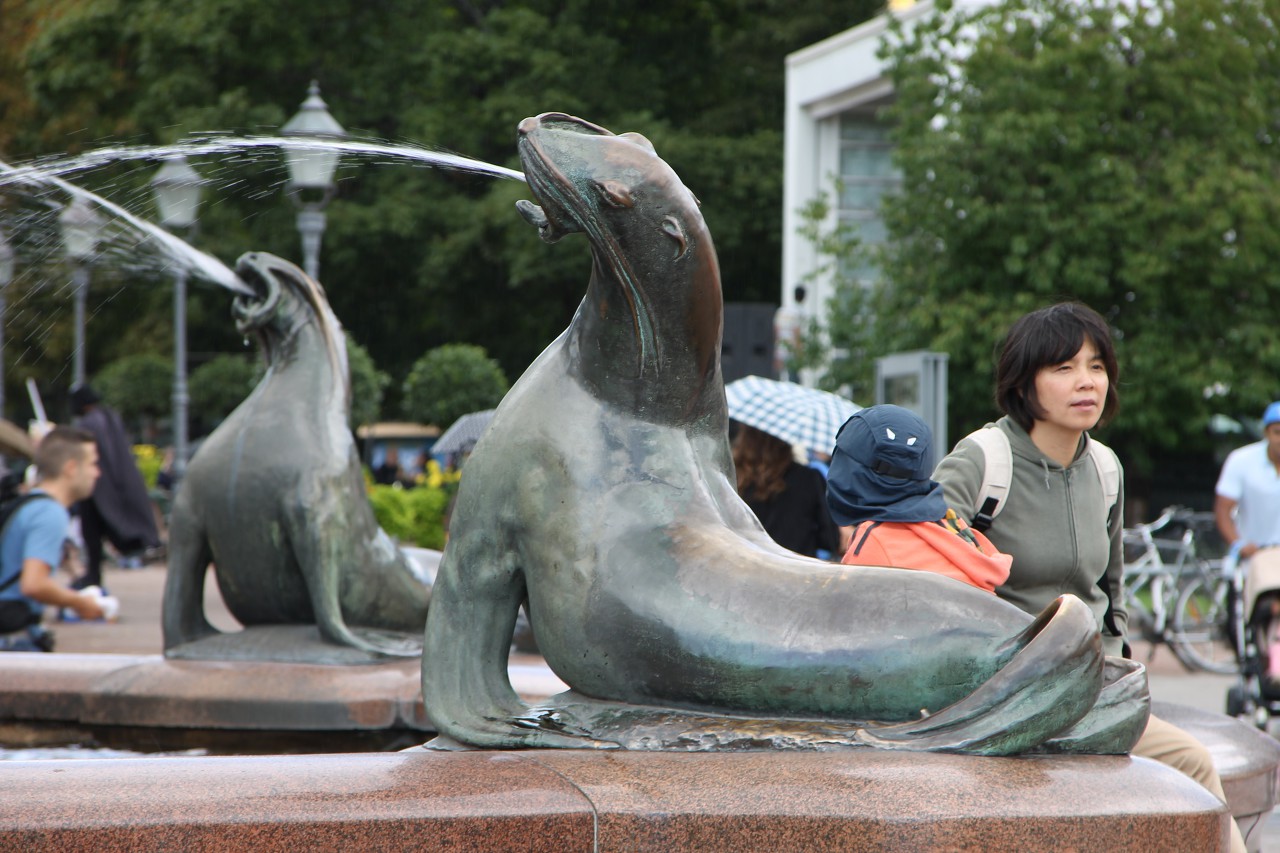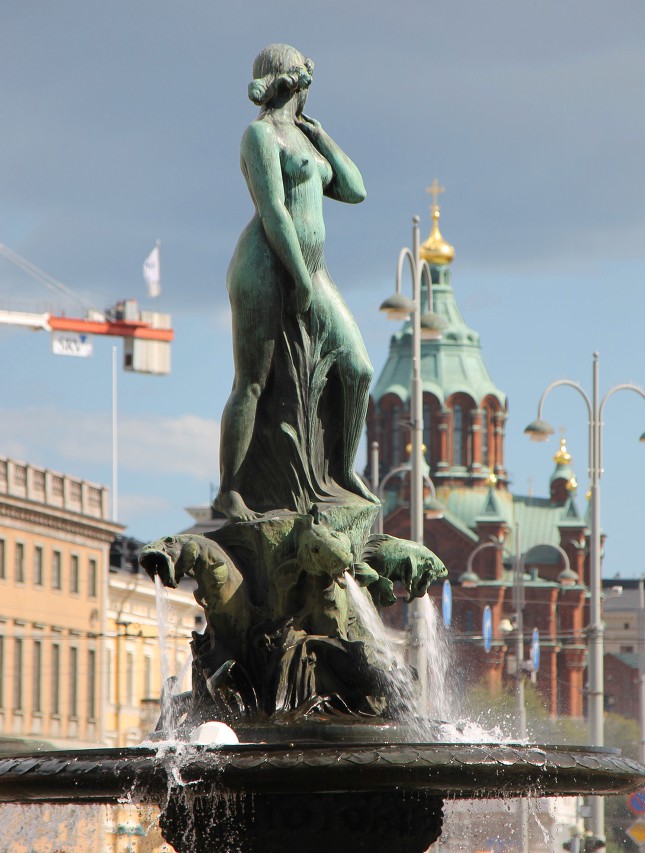Havis Amanda Fountain, Helsinki
At the end of Kauppatori square in front of the Esplanade park, there is the most famous fountain in Finland, called Havis Amanda. The proposal to build a fountain was put forward by the city Council of Helsinki in 1904. A pool of red granite designed by world-renowned Finnish architect Eliel Saarinen, the author of Central station and the bronze sculpture was commissioned in France.

The order was received by sculptor Ville Valgren, Finn, who went to study in Paris. The city Council wanted to see the monument as a symbol of the formation of Helsinki as the Baltic capital and Valgren cast bronze figure of the virgin, coming out of the water on the shore. Before sending to Finland, the sculptor exhibited his work at the Paris salon of arts, his "Mermaid" so pleased the Parisians that there were proposals to install the statue on the Champs Elysees. However, the sculpture reached Finland and on 20 September 1908 was presented to the public in the center of the fountain on the Market square.

The opening of the fountain took place without any pomp, but caused the largest cultural conflict in the history of Finland. The sculpture of a naked woman outraged adherents of traditional values, many believed that the image of a "Parisian prostitute" defames the Finnish girl who was represented by the statue. Feminists even saw the images of sea lions as lustful males surrounding a depraved woman. Over time, the passions subsided, and the bronze Nude girl became one of the symbols of Helsinki. In the competition for the name of the fountain, the variants "Daughter of the Baltic", "Sea maiden" and others were offered, but the name proposed by the author of the sculpture won. Walgren composed the name from the Swedish "Hav" (sea) and the Latin "Amanda" (worthy of love). The name "Havis Amanda" appeared a few days after the opening of the fountain in the humorous newspaper Fyrenin, but already associating it with the old ballad "Amanda and Herman" (Amanda och Herman), at the end of which the girl drowns in a rough sea. The nickname "Shameless Amanda", which was allegedly given to the statue by the defenders of morality, is only in Russian-language sources, the residents of Helsinki never call the fountain that.

In 1909, in a Walpurgis night a drunken students company put on the head of the statue the student cap with white top. Since 1921, the cap began to appear every year, the authorities unsuccessfully fought with it, and in 1961 this tradition was declared an official student holiday
